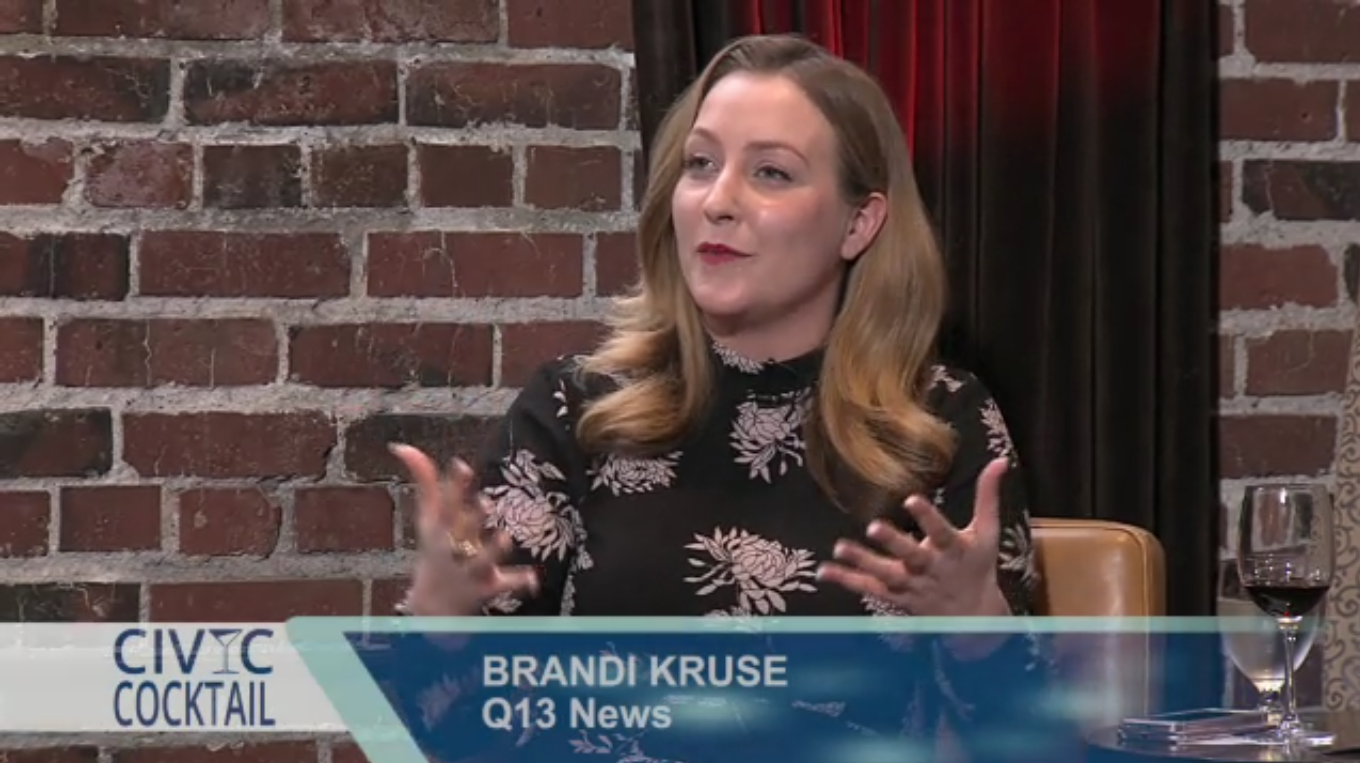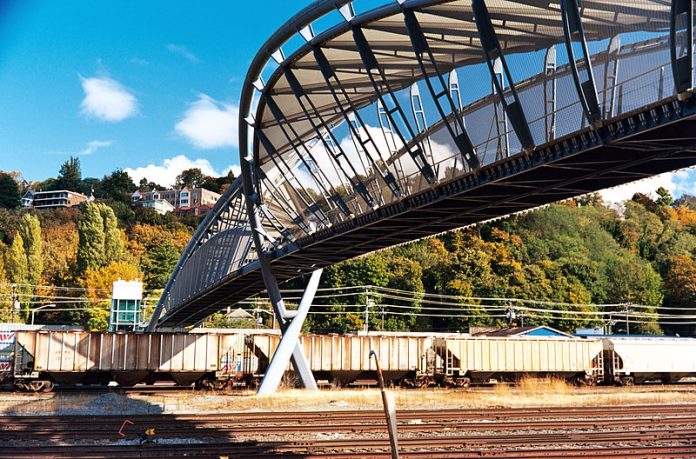On Thursday, Ryan Packer wrote that “South Lake Union Is For Cars” based on the Seattle Department of Transportation’s (SDOT) rather Sisyphean efforts to reduce traffic congestion on Mercer Street. After previously spending $140 million to upgrade the street, SDOT recently invested invested millions more in so-called “smart” technology of further optimizing the corridor for cars with Intelligent Transportation Systems (ITS) that seeks to squeeze more east-west throughput out of the roadway.
Commenters were quick to point out that this “smart” upgrade actually makes it even harder for transit users, pedestrians, and bicyclists to cross the corridor. Rather than a complete street, Mercer is a complete obstacle for north-south multimodel travel in the city. The reliability and quality of numerous bus routes–the 40, 62, and 70–are squashed by Mercer congestion and these smart upgrades go in the wrong direction. Bus riders often mention the urge to get off before the Mercer Mess to walk across rather than sit on a bus stuck in traffic. Unfortunately, crossing the street is a daily anxiety for people walking or biking.
Some armchair transportation engineers have proposed that Mercer Street needs pedestrian bridges and/or tunnels. Q13 Fox’s Brandi Kruse outed herself as a huge proponent of pedestrian bridges on Mercer at Civic Cocktail earlier this month. It seems like an easy fix, but the urban merits of pedestrian bridges are scant.
- Pedestrian bridges are expensive. Our Pedestrian Master Plan is woefully underfunded and blowing tens of millions on Mercer pedestrian bridges is likely to set us even farther back.
- They eat up valuable street space because they need long staircases to provide sufficient clearance. Most often sidewalks are shrunk to accommodate them impeding their flow.
- Pedestrians bridges fail to serve the mobility challenged unless they had even more expensive and cumbersome elevators.
- They could encourage motorists to speed. Removing pedestrians from crosswalks causes roads to have a highway atmosphere.

Digging into Kruse’s comments–and I’m not trying to pick on her since plenty of people share those views–can be elucidating for understanding flawed thinking that brings people to pedestrian bridges. The question, which was posed to an Amazon senior executive, shows a refusal to deal with the real trade-offs in allocating streetspace and the rush to scapegoat pedestrians. (34:30 mark in the video)
Mercer Street is my daily nightmare, and I’m very lucky that that’s the worst thing in my day is Mercer Street. And we’re talking about building an arena at KeyArena, what culpability or responsibility does Amazon have for how bad Mercer Street has become–I’m serious, who drives on Mercer Street and it’s just a nightmare? What can you do to fix it because one of the biggest issues is all of the people walking around making it so difficult to turn on to and off of. [laughter] I know it’s funny but I’m serious. It’s awful.
Amazon Vice President John Schoettler talks about leaving the transportation to SDOT and Kruse follows up by asking, “Would you pay for pedestrian bridges over Mercer Street?” Schoettler parries, “I’m not even sure the City would allow pedestrian bridges.” She presses him again and he says they’d consider it.
Pedestrian bridges would probably make it a little more pleasant and reliable for able-bodied pedestrians to cross Mercer, but it would fail to address the root problem: too many cars. The framing of Kruse’s question suggests she just wants pedestrians out of the way so cars can move marginally faster. Of course, the ultimate source of congestion for Mercer is the capacity of I-5 itself and number of motorists trying to access it at once. Only so many people can enter the freeway simultaneously, and there’s no realistic way to expand I-5 capacity downtown by any significant margin.
My solution for Mercer is much more drastic than a pedestrian bridge. I proposed removing I-5 from downtown to create more pleasant neighborhoods and re-balance commute demands, dispersing them into the grid rather than funneling them onto chokepoints at the Mercer and Denny on-ramps. That would might finally clean up the Mercer Mess–unlike flashy ITS solutions that do almost nothing because of induced demand.
We can dig even deeper into that “Mercer needs more space for cars” mindset because later in the Civic Cocktail interview, Kruse shared her thoughts about South Lake Union as a neighborhood.
You talked about how South Lake Union used to be a neighborhood that people drove through, not to. And Q13 is on Westlake Avenue and I refuse to go there. There’s so many restaurants that I love. I had a coffee date with someone and I went down there, and it was so busy and the construction, that I just turned around. I said listen, let’s meet somewhere outside of there. And I understand that a lot of that comes with development, but what do you see that neighborhood becoming? I mean right now there’s no parking. There’s construction everywhere. It’s hard to get through. The traffic’s awful. Do you have a vision for what you want South Lake Union to become? Because right now I have to tell you that right now I don’t feel that neighborhood’s accessible to me and I work eight blocks up the street.
At this point an audience member yells “walk.” Kruse responds, “But even walking it’s just so busy, and all the restaurants are so packed. I’m not saying that’s a bad thing, but it feels very uninviting.” She added, “I used to live in New York City. I love some hustle and bustle, but it just feels jam-packed.” Schoettler responded:
What we’re really trying to create is an 18-hour district. We really want it. With more housing and everything coming in there, I think they’ll be a great vibe that will be there at night. In the buildings we have there’s over 8,000 parking stalls, and during the nighttime they’re all open and it’s some of the cheapest parking in all of Seattle.
Schoettler’s response starts to hint that maybe Kruse did have a point that Amazon needs to deal with traffic in South Lake Union and tighten up its vision for the neighborhood, but it’s not in the way she thinks. Amazon has over 8,000 parking stalls and is building 3,000 more underneath its three new orb things. If we are trying to reduce traffic on Mercer, we need to nip it in the bud by building smaller and fewer parking structures. It’s not very logical to expect less traffic while South Lake Union is in the midst of adding 10,000 more parking stalls. 20% of Amazon workers walk to work, which is commendable, but Amazon should start getting serious about reducing car trips and not inducing demand.
The way to deal with the Mercer Mess is high-quality, high-capacity transit, which will arrive definitively by 2035 with the Ballard-to-Downtown light rail line. However, in the time being, we can also make sure our buses are more efficient. The 70 and the 40 are slotted to be upgraded to RapidRide routes and we need to ensure they have priority even through the Mercer Mess. Moreover, we can deal with the Mercer Mess by putting more housing within walking distance of Amazon headquarters. We’re on our way to doing that, but it seems fair to ask that areas like Uptown–quite close to Amazon–to go bigger on their upzones. We won’t solve Mercer with pedestrian bridges and fancy traffic computers.
The title image is by Dennis Bratland of the Amgen helix pedestrian bridge in Interbay. Pedestrian bridges should only be used like this as a last resort when modes absolutely must be separated.
Doug Trumm is publisher of The Urbanist. An Urbanist writer since 2015, he dreams of pedestrian streets, bus lanes, and a mass-timber building spree to end our housing crisis. He graduated from the Evans School of Public Policy and Governance at the University of Washington in 2019. He lives in Seattle's Fremont neighborhood and loves to explore the city by foot and by bike.


